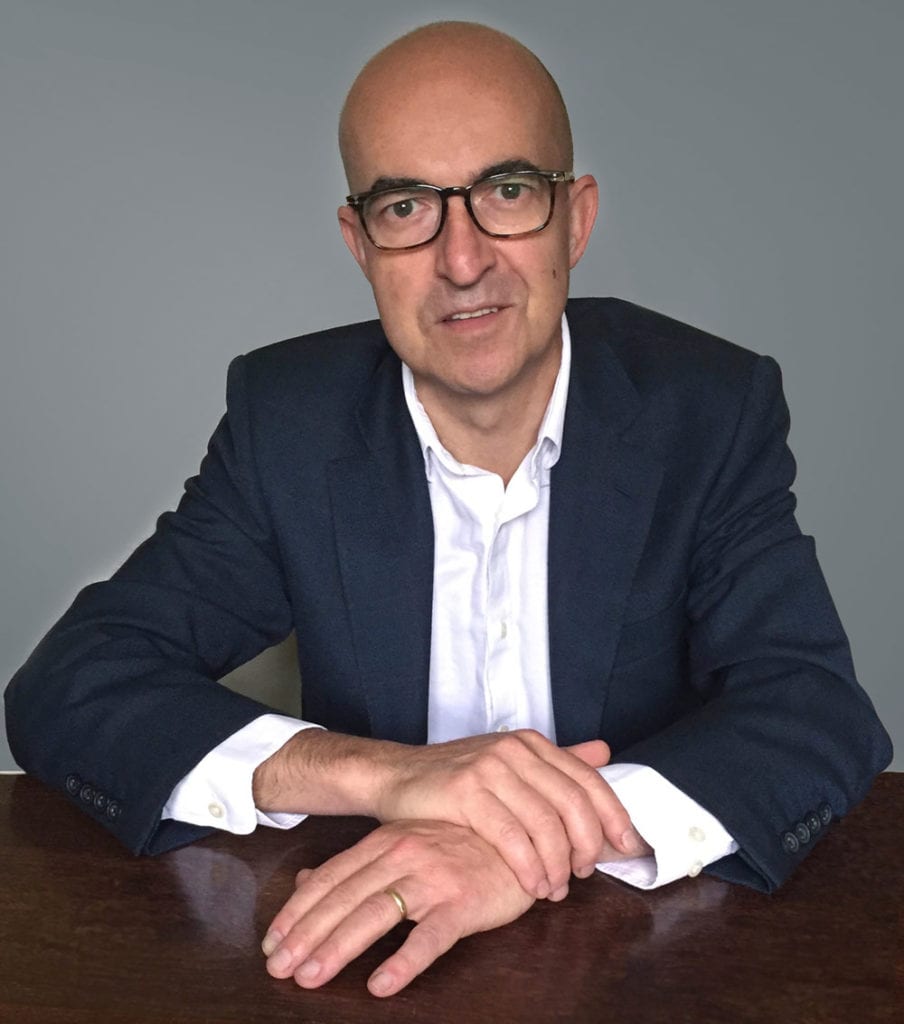
The transition to less harmful nicotine products will succeed only if investors buy into the concept.
By George Gay
It is probably reasonable to suggest that in a fully rational world, it would not be difficult to raise investment funding for companies trying to reduce the incidence of tobacco smoking around the world. After all, smoking, we are told, is extremely harmful to the health of smokers and those around them. Therefore, if you reduce the incidence of smoking, you reduce the harm done to smokers while reaping wider societal benefits.
But we don’t live in a fully rational world. Reviewing in the London Review of Books in 2019, Philosopher of the Heart: The Restless Life of Soren Kierkegaard, by Clare Carlisle, Terry Eagleton made the point that while Kierkegaard and a number of other thinkers would have accepted the idea that without reason we perish, they believed there was something more fundamental than reason shaping the way we think: power, desire, emotional bonds …
Raising money, even for good causes, has never been a simple matter.
One company with skin in this game is London-based Idwala Research, which offers research and advisory services aimed at promoting global tobacco transformation and harm reduction. In an email exchange in April, Managing Director Pieter Vorster told Tobacco Reporter that part of Idwala’s offering comprised advising companies on their capital-raising activities. “Before approaching potential investors, it is critical to develop a clear investment thesis, which requires a deep understanding of its business model and how it is positioned or likely to be positioned within the tobacco harm reduction product (THRP) universe and the evolving regulatory framework,” he said.
Idwala’s clients are typically smaller businesses and startups since large corporations, tobacco companies in particular, generate strong cash flows and finance their own THRP activities. On the other side of the equation, meanwhile, Idwala focuses its search for potential investors based on where the company seeking funding is in its development life cycle and on the amount of capital it is looking to raise. Potential investors include high-net-worth individuals, venture capital funds and private equity funds.

ESG considerations are generally only applied once risk/return criteria are met.
Pieter Vorster, managing director, Idwala Research
Seeking returns
So what are these potential investors looking for? Are they interested mainly, perhaps entirely, in the level of return they might expect, or do they take, in part or in whole, an “ethical” view: either being repulsed by the presence of “tobacco” in the acronym THRP or drawn to its “harm reduction?”
“Ultimately,” said Vorster, “funds flow to where investors perceive the best returns for a given level of risk. ESG [environmental, social and governance] considerations are generally only applied once risk/return criteria are met, which means that whilst companies may be excluded from a portfolio on ethical grounds, they are unlikely to be included unless they also offer attractive returns.”
It is true, however, that some potential investors object to investing in anything related to tobacco and nicotine regardless. “To some extent, this is understandable,” said Vorster, “given the abstinence-based rhetoric evangelized by the likes of the Bloomberg Foundation and the Campaign for Tobacco-Free Kids. Still, it results in a golden opportunity to accelerate both tobacco industry transformation and global harm reduction potentially being missed.”
And in answer to another question, Vorster added that, by making nicotine, rather than smoking, the enemy, organizations such as the World Health Organization were actively denying millions of smokers access to safer alternatives and, in doing so, perpetuating entirely avoidable smoking-related deaths. “This, sadly, also filters through to how many investors approach the sector,” he said.
Active engagement
But it is not all doom and gloom, and Vorster pointed out that last year’s launch of the Tobacco Transformation Index by the Foundation for a Smoke-Free World had marked a key development in the process of industry transformation by encouraging investors to engage actively with publicly traded tobacco companies about change.
According to a note on the Idwala website, the biennial Index ranks the top 15 global tobacco companies on their relative progress toward harm reduction. “It aims to accelerate tobacco harm reduction by encouraging industry participants to speed up the implementation of measures that will improve their relative ranking,” the note says. “In addition, it seeks to provide investors with an objective tool for engagement with the industry.
“For the Index to have its desired effect, tobacco companies would need to perceive value from improving their index ranking, and, for investors, it needs to provide the tools that enable them to engage more effectively with the industry to bring about change. In time, we believe both could be achieved…”
Theoretical projections are all very well, but potential investors are likely to be convinced about the value of a new project also if similar projects have provided reasonable returns in the past. So the questions arise as to how past THRP developments have been funded and whether they have produced returns good enough to allow past performances to be used to convince potential investors?
“The tobacco industry—PMI and BAT in particular—has invested heavily in these products, which has all been financed from internal resources,” said Vorster. “There is a strong positive correlation between the contribution from reduced-risk products to sales and the valuation multiples tobacco companies trade on, principally because these revenues are growing much faster.
“Financing of nontobacco industry investment has come from a mixture of entrepreneurs’ own capital, friends and family, venture capital as well as private equity. There have been some notable successes, especially for early investors in some of these ventures. When Juul sold 35 percent to Altria, it valued the business at $37 billion, and Smoore International, which listed in Hong Kong last year, is currently also valued at $37 billion. Even RLX, whose share price has declined significantly since it listed in the U.S. in January, is still valued at $14 billion.”

There is a strong positive correlation between the contribution from reduced-risk products to sales and the valuation multiples tobacco companies trade on.
Pieter Vorster, managing director, Idwala Research
One apparent problem with the transition to THRPs is that it moves from one environmental concern—cigarette butts—to another—batteries, and the question arises whether this is a negative issue as far as some investors were concerned.
“It is bound to become an issue as sales of these products grow, and it is not only batteries that would be of concern,” said Vorster. “Disposable pods and nicotine liquid bottles are all nonrecyclable and are becoming a growing litter challenge. Furthermore, heated-tobacco products typically use filters similar to those found in filter cigarettes.”
At the same time, could it be the case that potential investors might be wary of the latent success of at least some THRPs because they possibly provide a route for smokers to transition through these products to abstinence and, therefore, are part of an endgame for both combustible cigarettes and THRPs?
“Potentially, yes,” said Vorster, “but there is no evidence to suggest that this is happening. Global nicotine use is rising, even though smoking is declining. In part, this is down to consumers having more opportunities to use these products than they do smoking cigarettes. It is also plausible to suggest that lower health risks would attract consumers to the category who would otherwise have avoided smoking.”
In offering the services it does, Idwala has nailed its colors to the THRP mast, and it seems fair to ask whether it has similarly strong views about the range of current THRPs. Does it believe, for instance, that vapes are more efficacious and less controversial than HnB products containing tobacco? Or does it believe tobacco harm reduction should be taken in the direction of oral pouches using synthetic nicotine?
“I believe all these products, and ones we don’t yet know about, have a role to play if they help consumers avoid the harm caused by smoking,” said Vorster. “What works for one doesn’t for another. The closer a product is to a cigarette, the more likely a smoker will initially switch to it. Over time, these same users may choose to distance themselves from tobacco whilst others may want to do so from the start. Synthetic nicotine is still nicotine and, currently, significantly more expensive to manufacture.”
From vision to reality
Idwala envisions an environment where persistent and broad-based tobacco harm reduction becomes a reality in both developed and emerging markets. “A prerequisite for this is an acceleration in the transformation of the mainstream tobacco industry combined with the continued growth of new enterprises adept at driving innovation,” the company’s website says. “This needs to be underpinned by sensible regulatory and tax regimes …
“Broad availability of reduced-risk products that appeal to smokers, and those who otherwise would have smoked, will require sustained and substantial investment.
“Ultimately, the pace of transformation and harm reduction will be a function of the quantum of investment into these products. In turn, this will depend on the potential risks and returns associated with these investments…”
This all sounds very plausible, but how confident is Idwala that enough potential investors will be found to finance within a reasonable time all the future developments necessary to push forward significant levels of tobacco harm reduction, and what part would Idwala play in uncovering that funding?
“On the assumption that the regulatory environment is conducive to the expansion of THR, which is by no means a minor assumption, funding will be available for opportunities that offer investors attractive risk-adjusted returns,” said Vorster. “With annual retail sales of combustible tobacco products exceeding $800 billion, there is no question of the potential market being big enough.
“How successful a given product is will firstly depend on how satisfying it is to consumers. The closer the sensorial experience and nicotine delivery to a cigarette, the more likely smokers will switch. But it also needs to be widely available at a price that doesn’t result in consumer resistance whilst delivering margins that generate the returns required by investors. Does the product have a competitive advantage over others, is this a sustainable advantage, and is its IP protected and defendable? These are all important additional factors that drive potential returns.
“Regulatory risk is a fact of life in tobacco and also tobacco harm reduction. As an emerging category, reduced-harm products are arguably subject to more regulatory uncertainty, and many investors find this hard to navigate. For those who are adept at understanding and pricing regulatory risk, extra-normal returns are obtainable.”
Finally, Vorster said that Idwala would play as big a part as the market allowed it to do. “Finding funding is the culmination of first identifying opportunities that we view as attractive, advising these businesses on strategy, regulatory developments and the competitive landscape as they evolve and helping them develop their investment proposition,” he said. “We furthermore aim to support the development of THR by contributing to the debate through our blog, conference appearances and research projects and by providing a financial markets’ perspective to THR activists and organizations.”


